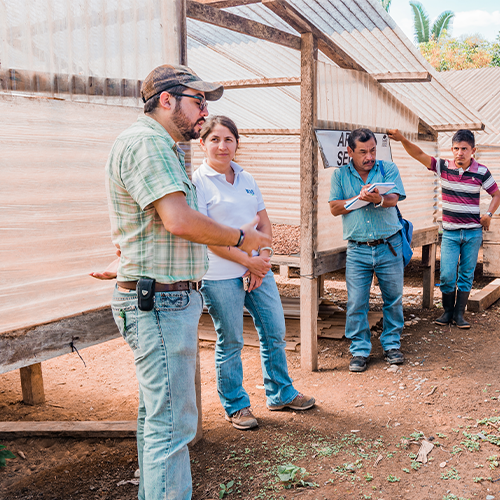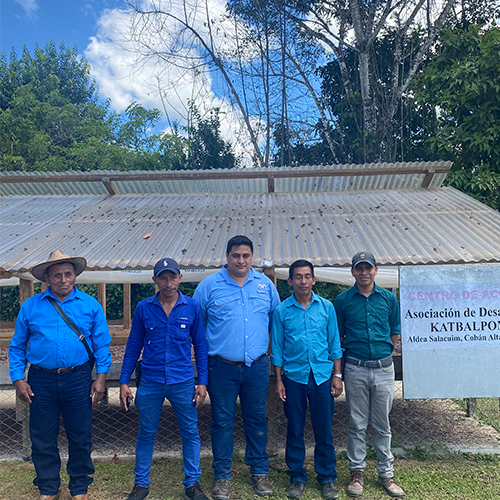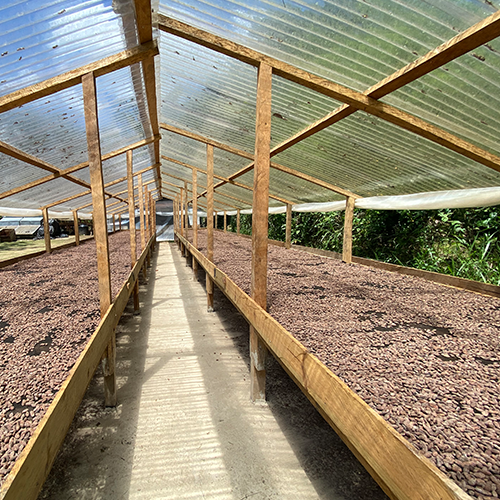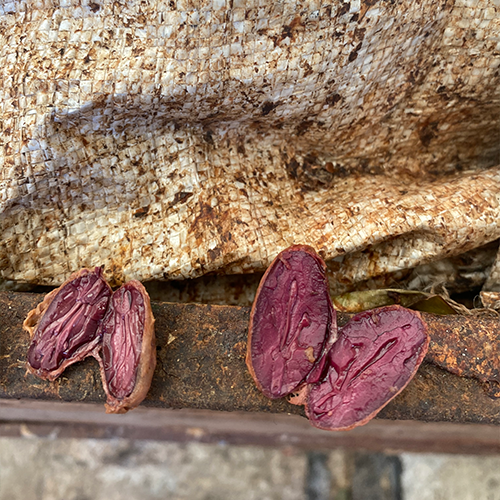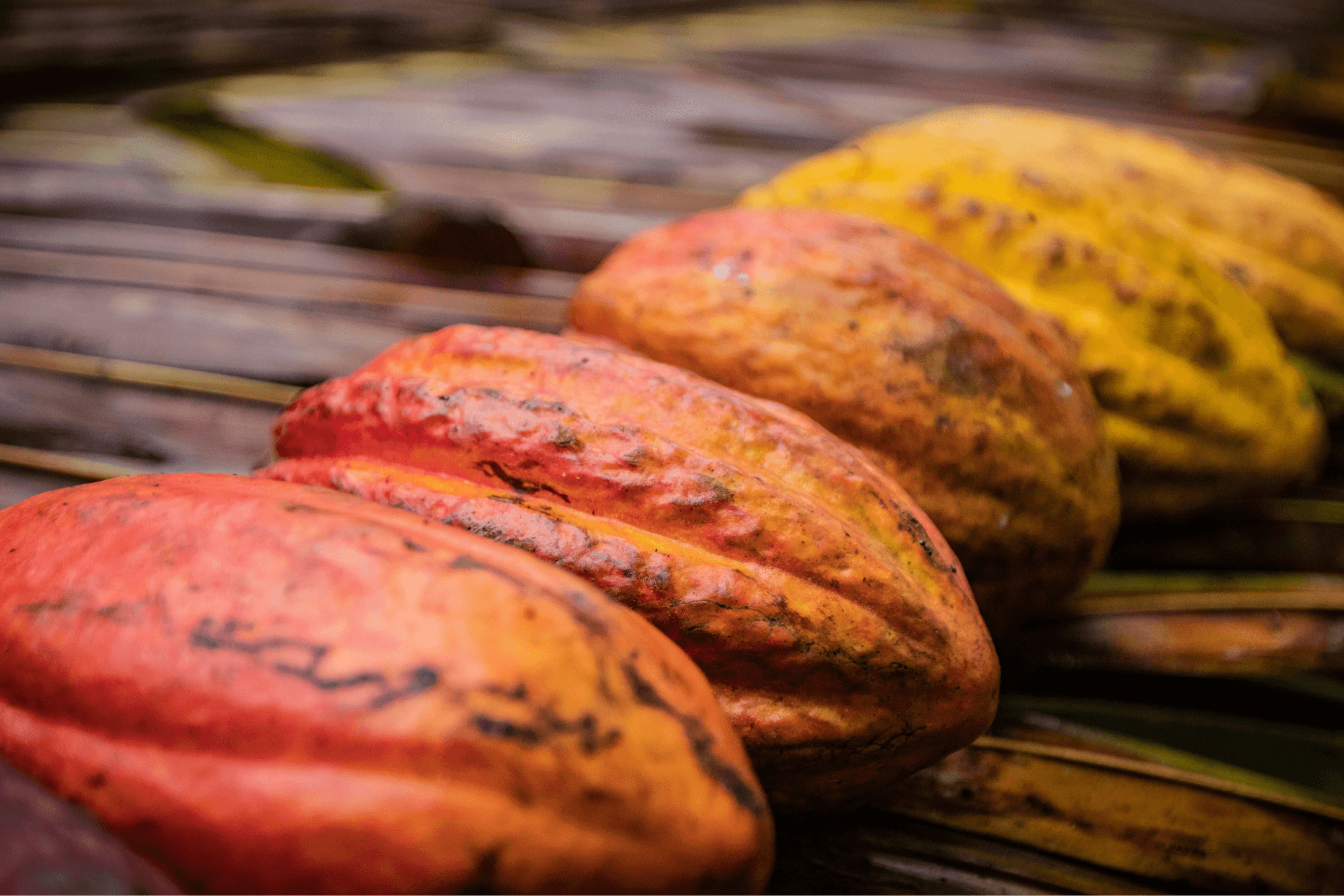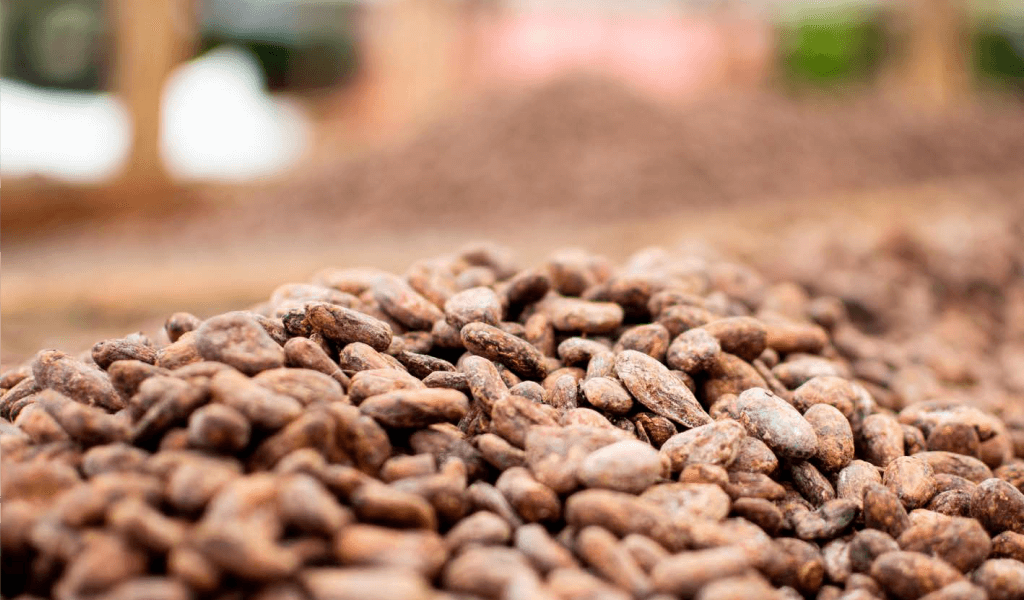Guatemala
LACHUÁ
A conservation-focused group of indigenous producer associations located in a hill-studded, jungle-rich area of northern Alta Verapaz.
2022 Data - Product
Quality: Ultra Premium
Flavor: Strawberry, mocha, lemon zest & peanut
Fermentation Style: Box
Drying Style: Patios & solar dryers
Quality Practices: Temperature monitoring during fermentation, pH or sugar monitoring during fermentation, specific protocols for flavor & cut tests during fermentation
Hand Sorting: Yes
Certifications: Organic
Number of awards in 2022: 10
2022 Data - Planet
Crops that are used for intercropping: Banana, plantain, palm, citrus & timber
Environmental practices: Soil and river bank conservation
Organic hectares cultivated: 107
Average percent of shade of cacao farms: 45%
Distance of producer to facility (km): 4
Distance to port (km): 463
Ocean freight CO2kgs per MT (US): 49
Ocean Freight CO2kgs per MT (EU): 137
2022 Data - People
Community-focused initiatives: Training and technical assistance in cacao production, plot management & diversification
Trainings conducted: Farm productivity, ecological practices & cacao quality
Producers purchased from: 98
Female producers: 26
Organic producers: 98
Producers under 35 y/o: 22
Total # of producers trained: 77
Total # of female producers trained: 25
Total # of producers under 35y/o trained: 22
Full time employees: 3
Part time employees: 7
Part time female employees: 5
Average farm size (ha): 1.2
Average sales per producer (dry kg): 268
Average annual cacao revenue per producer: $715
The Lachuá region is home to a pristine cenote lake within a national park, which has been a protected RAMSAR site since 2006, and to communities of indigenous Q’eqchi’ Maya families.
Cacao Verapaz works in partnership with two smallholder associations located around the lake, ASODIRP and KATBALPOM. Together with three additional associations of other products like cardamom and chili peppers, they are leaders in creating economic incentives to develop and maintain biodiverse agroforestry buffer zones around the lake.
The communities work together to use sustainable agroforestry as a buffer, protecting the area from industrial palm oil development and other forms of extractive agriculture pervasive in northern Guatemala. The producers of Lachuá are highly professional and efficient; Uncommon Cacao conducted a cost of production study in this region in 2019 which found that producers in this region earn a 50%+ profit margin on their cacao sales, after including both monetary and non-monetary costs to produce cacao.
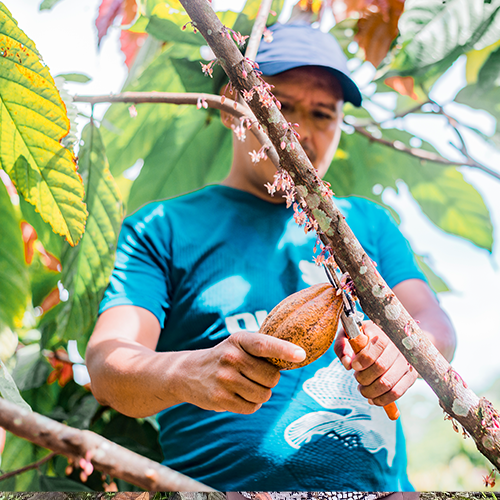
Pictured is producer Pedro Pa Beb harvesting a cacao pod
TERROIR
The cacao farms in the Lachuá region are planted amidst lush karstic limestone hills that rise up from the rolling verdant landscape. Planted in more recent decades with a combination of trees selected locally for performance and flavor, the Lachuá cacao is complex and has personality.
We love this cacao because of its unique citric acidity. Lachuá cacao combines tangy fresh berries with nostalgic coffee, nut, and chocolate base notes, offering a wide variety of compelling flavors possible through dialing in different roasting profiles.
The Lachuá region is home to a pristine cenote lake within a national park, which has been a protected RAMSAR site since 2006, and to communities of indigenous Q’eqchi’ Maya families.
Cacao Verapaz works in partnership with two smallholder associations located around the lake, ASODIRP and KATBALPOM. Together with three additional associations of other products like cardamom and chili peppers, they are leaders in creating economic incentives to develop and maintain biodiverse agroforestry buffer zones around the lake.
The communities work together to use sustainable agroforestry as a buffer, protecting the area from industrial palm oil development and other forms of extractive agriculture pervasive in northern Guatemala. The producers of Lachuá are highly professional and efficient; Uncommon Cacao conducted a cost of production study in this region in 2019 which found that producers in this region earn a 50%+ profit margin on their cacao sales, after including both monetary and non-monetary costs to produce cacao.

Pictured is producer Pedro Pa Beb harvesting a cacao pod
TERROIR
The cacao farms in the Lachuá region are planted amidst lush karstic limestone hills that rise up from the rolling verdant landscape. Planted in more recent decades with a combination of trees selected locally for performance and flavor, the Lachuá cacao is complex and has personality.
We love this cacao because of its unique citric acidity. Lachuá cacao combines tangy fresh berries with nostalgic coffee, nut, and chocolate base notes, offering a wide variety of compelling flavors possible through dialing in different roasting profiles.
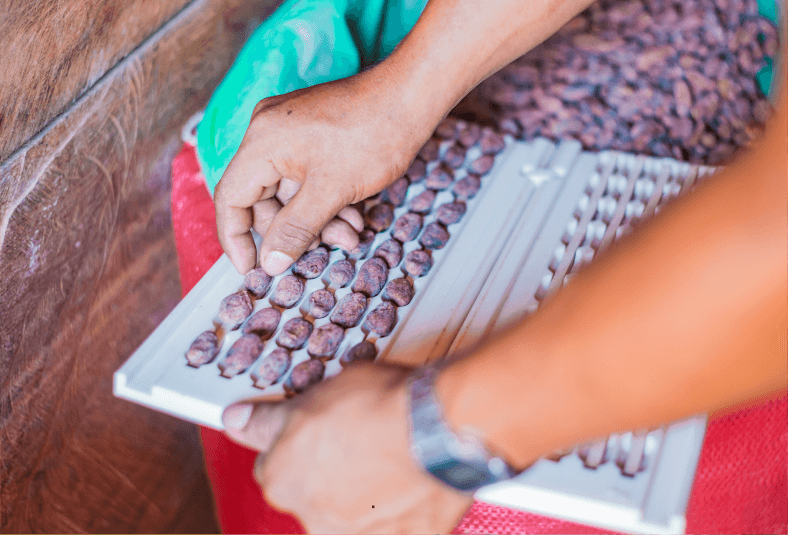
Notable Awards

